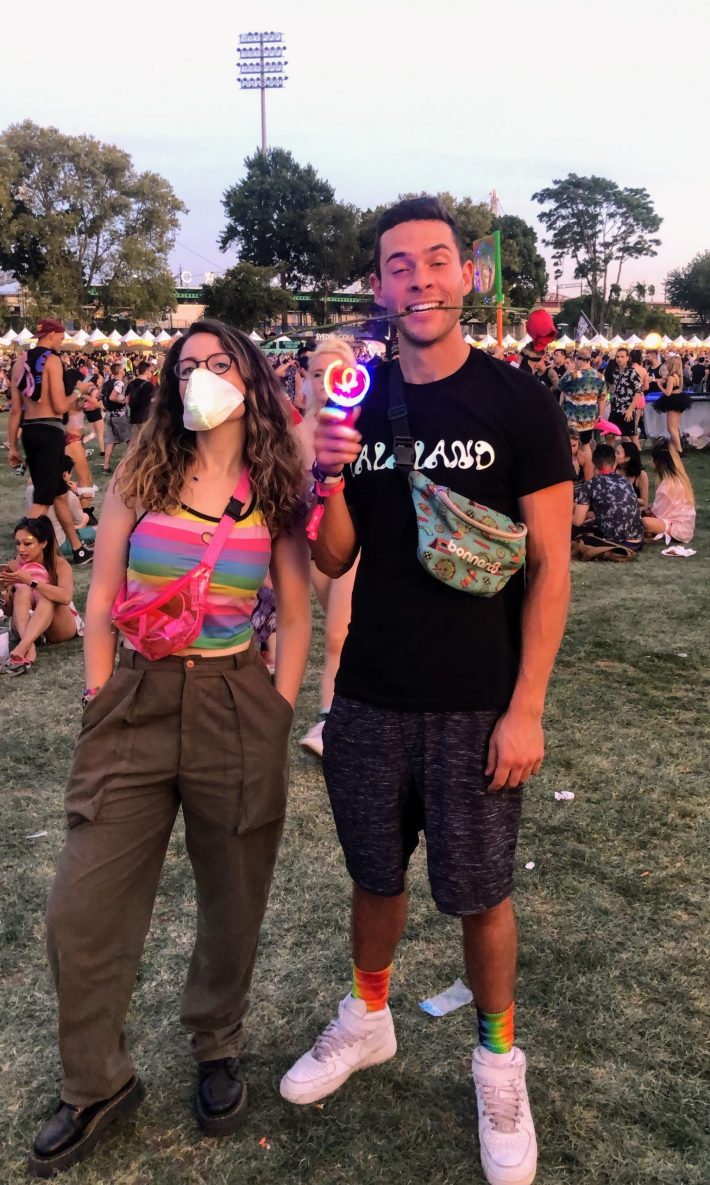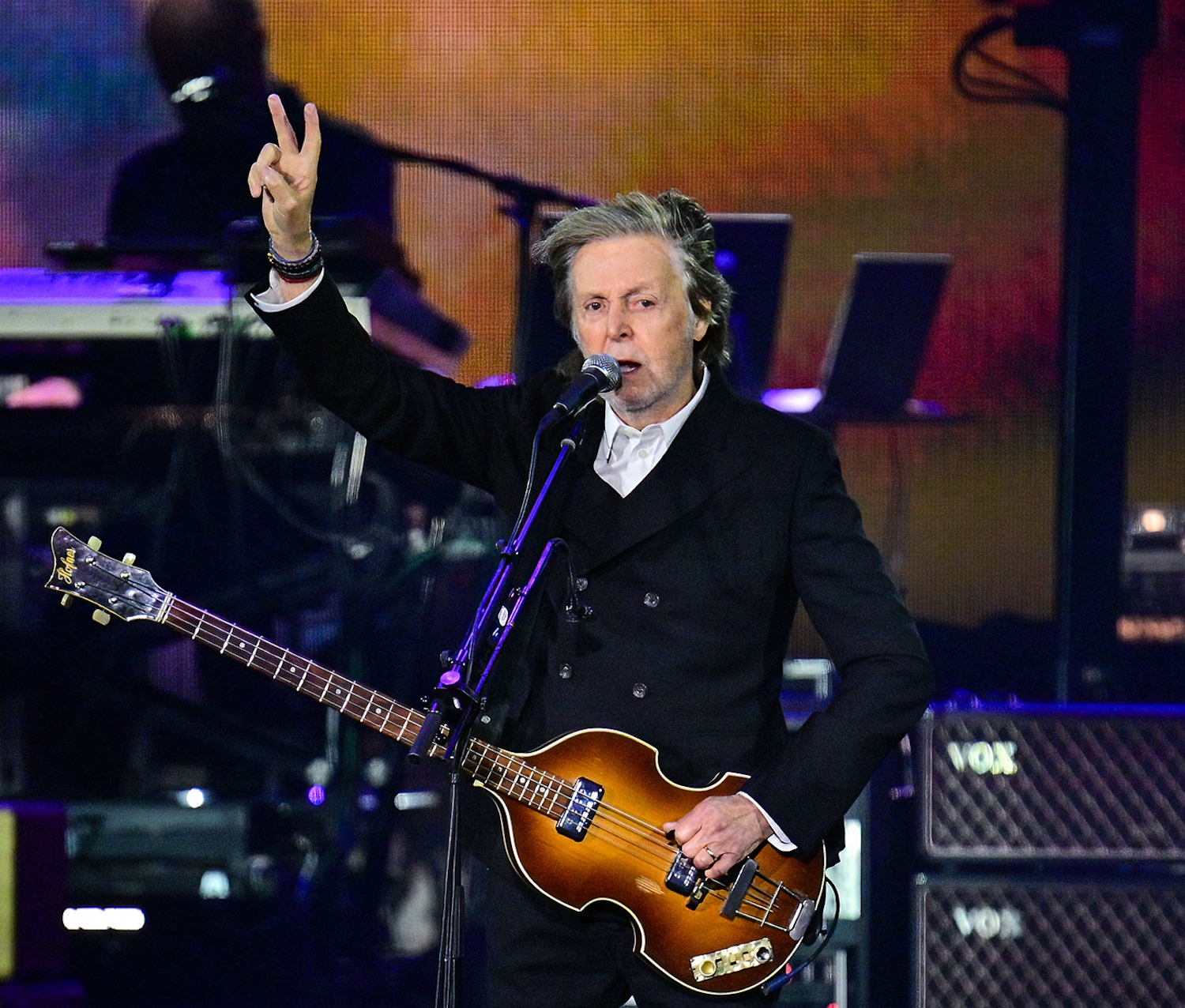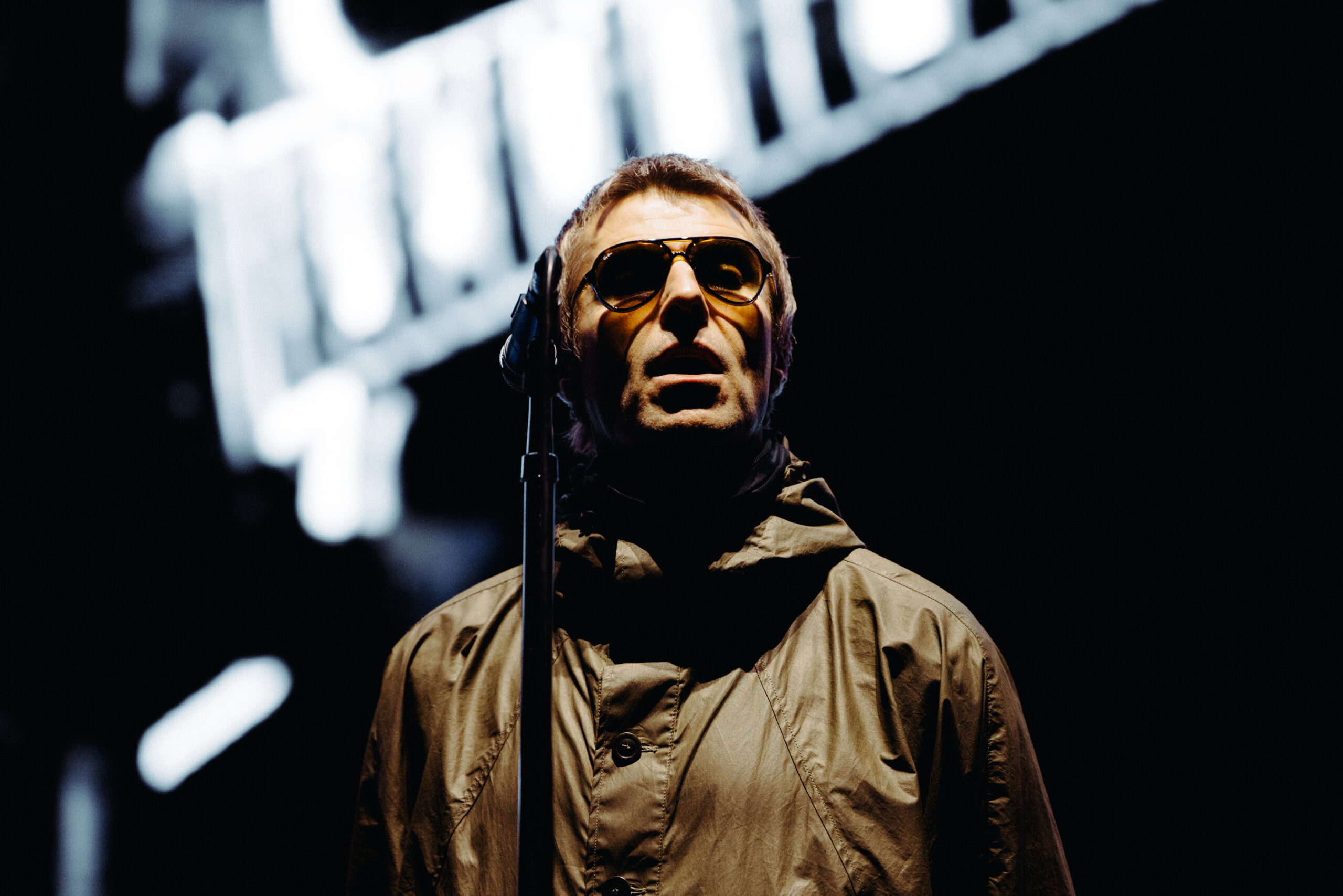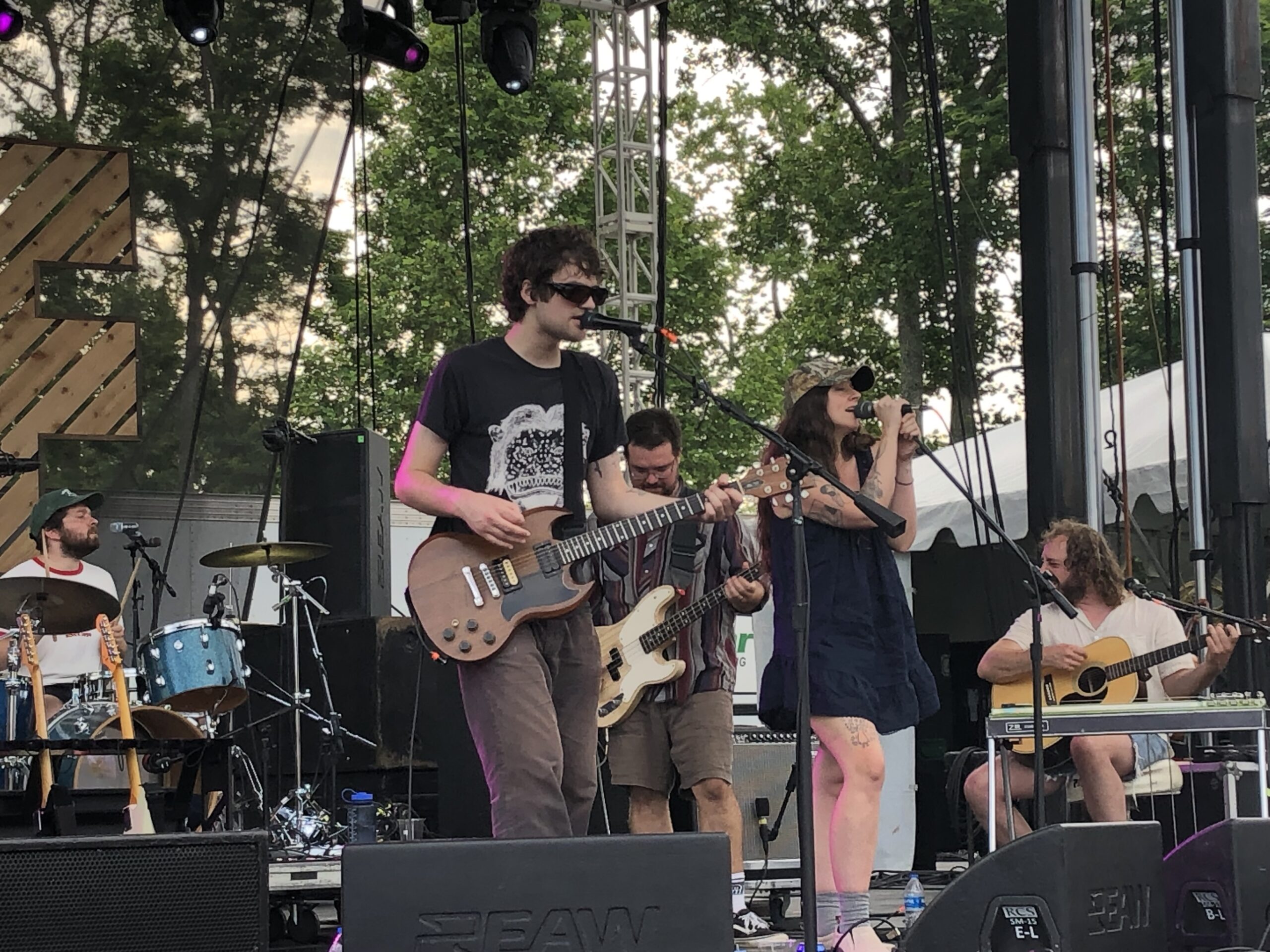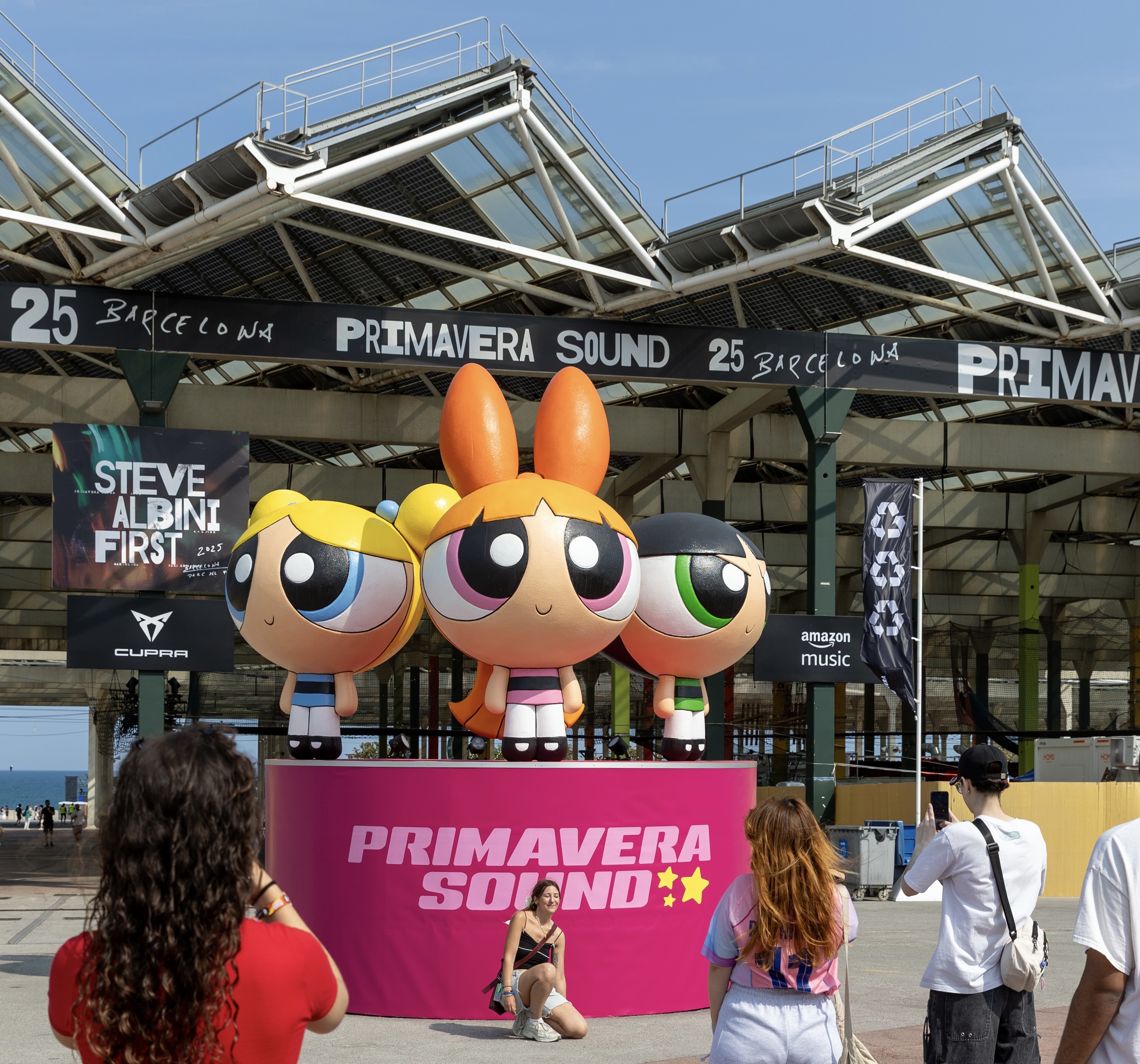The early 2010s EDM boom hit while I was in high school. I grew up in a suburb outside of Washington, DC, where nights were spent driving around aimlessly, blasting dubstep on garbage speakers. On weekends, the road extended toward the 9:30 Club, Black Cat, and Merriweather Post Pavilion, historic venues that were opening their doors to acts that would define a new wave of EDM. The filthy bass drop was a deathly, senseless, otherworldly sound that tore you right out of your suburban boredom.
Rave kids came to make up a sizable subculture, so when the EDM-focused music venue Echostage opened in 2012, there was no shortage of business. The four tenets of rave culture, acronymed PLUR -- "Peace, Love, Unity, Respect" -- appealed to the overprivileged, under-stimulated, blissfully unaware children of doctors, lawyers, and politicians. So did the bass vibrating through your entire body, the neon costumes and LED gloves, the seizure-inducing strobe lights. I saw Deadmau5 on my 15th birthday and felt a free space open in my anxious, regimented adolescent universe. The spiraling synths on “Sofi Needs A Ladder” sounded like salvation. They still kind of do.
When Avicii died last year, Vulture's Emily Yoshida recalled EDM's promise of "post-recessional excess." Yoshida had graduated from college while the craze was underway; its relentless thump echoed in the background as she fought to find affordable housing and reliable employment. "Like every apocalyptic radio pop song of that era, asking us to live like tomorrow will never come, there was an overwhelming need for the music of the era to freeze time," she wrote. "Both to stave off adulthood, but also to deny every feeling of doubt and sadness and confusion that had come before."
Roughly 10 years later, an imminent recession is just one item on a grocery list of valid fears. Many of the rave kids I grew up with have grown into rave adults. EDM feels ripe for a comeback, with its maximalist aesthetics, the walls of sound and vaguely inspiring lyrics lulling you into a temporary escape. The genre, in its purest form, has mostly left the mainstream spotlight. MTV isn't showing half-naked rave babes covered in cake anymore. Skrillex’s "Scary Monsters And Nice Sprites" probably wouldn’t crack the Hot 100 in 2019. But the spirit of the early 2010s was alive and well on NYC's Randall’s Island this past weekend.
The scene at Electric Zoo's ninth iteration felt like a cross between the set of Euphoria and Spencer's Gifts, populated by teen girls in glittery assless chaps and 30-something men in crude graphic tees. There were white women in boxer braids and white men in dashikis. A dude in a full Ted costume danced and stopped for pictures. We were frozen in a time before cultural appropriation entered popular discourse, a world where Seth MacFarlene just released his new anthropomorphic teddy bear movie.
A display of folding fans hung above a busy merch table just outside the festival gates, emblazoned with slogans like "CUNT" and "MAKE ME CUM AGAIN." I could probably use a fan, I thought while reapplying sunscreen. My first stop upon entering the grounds was the main stage for Benny Bennassi. He played "Satisfaction" and other songs that sounded like "Satisfaction," which I enjoyed because "Satisfaction" is an awesome song.
I saw Borgore next. The first time I heard his music was in 2010 when my friend's cool older sister showed us "Love," mouthing along, "The thing I love the most is cumming on your face. Suck it, bitch!" I remember his 2012 Miley Cyrus collab -- its jarring, squelchy drop and Borgore stating plainly, "You should've learned bitches love cake." Apparently, he released a like-minded track with Gen Z former-Disney-star-gone-bad Bella Thorne in 2017. If nothing else, the man has a consistent formula.
EDM is the horniest genre, I decided as giant animated boobs inflated on the screen above Borgore's head. Two lingerie-clad girls weaved through the audience, one leading the other on a pink leash. I followed them out, toward gorgeous, hard-bodied dancers performing shuffling footwork for iPhone cameras. Everything looked the same as it did years ago. Except for maybe the leash. The leash was new to me.
A friendly drunk guy slid a blue beaded bracelet onto my wrist while we stood in line at a bar shaped like a giant pink Svedka bottle. I welcomed the gift because he had about 20 more stacked up his arm. My new accoutrement spelled out "DERP" in alphabet letter beads. Across the festival, the only accepted payment method was prepaid credit that you could load onto your wristband and re-up at any time. I traded my invisible money for a lemonade vodka and became painfully aware of the $40 I had already spent on drinks. "Selling $15 cocktails is like, anti-PLUR," I said to my bracelet friend. He nodded.
Standard rave uniforms include "kandi" beads, sometimes alongside a pacifier to prevent MDMA-fueled teeth grinding. I saw the erotic and the infantilizing intermingle as adults inhabited their lala land, sporting tutus, pasties, and cartoon character motifs, silencing their nerves with booming bass. The sound of children chanting to a sputtering beat drew me into a neighboring tent: “All we ever hear from you is blah blah blah/ So, all we ever do is go ya ya ya." It was Armin Van Buuren's hit "Blah Blah Blah," I was later informed. An "I don’t want to adult today" graphic tee caught my eye in the crowd. Synth stabs quickened and the kids' voices marched on, "And we don't even care about what they say, 'cause it's ya ya ya ya blah blah blah blah."
My younger brother was in town for the festival. He's a seasoned rave kid and a college golfer, an indisputably hilarious combination. When we met up, he was holding a rose above his head and guiding his friend through swaths of people. His other hand clutched a spinny light-up toy, which he waved in my face like a proper sibling. Shortly after I donned his spare glow-in-the-dark surgical mask, I was approached by a girl who looked like a woodland fairy. She hugged me and placed a stone pendant necklace in my hand before launching into a story about her wedding last year at Electric Forest. "I give these necklaces to girls who inspire me. I don't know why I choose the girls that I choose," the fairy girl whispered in my ear. "I can tell that you manifest everything in the world." My brother stared at us, confused, and mouthed, "Ask if she has molly." I put on the necklace, comfortably certain that a curse would fall upon my family if I didn't.
I later found myself jumping around Afrojack's raucous electro-house party and cry-dancing to Zedd's towering transcendent pop. That girl was right, I thought, I really do manifest everything in the world! Watching my brother thrash his head to Green Velvet's transfixing tech house was bittersweet. It became clearer to me why one might rave on well past adolescence. These DJs force you to feel. They blast you into the same plane as everyone else, like guided group meditation. It’s overpowering. There’s no room to think.
I lost him about halfway through the set and sent a text: "Everything OK?" My sense of reality rushed back as I sat in between stages, awaiting his response in a mess of competing noise. Passing faces ranged from glowing and revived to wide-eyed and afraid. It was closing in on bedtime for me and the rave babies. My phone dinged and displayed my brother's message: "Amazing."
